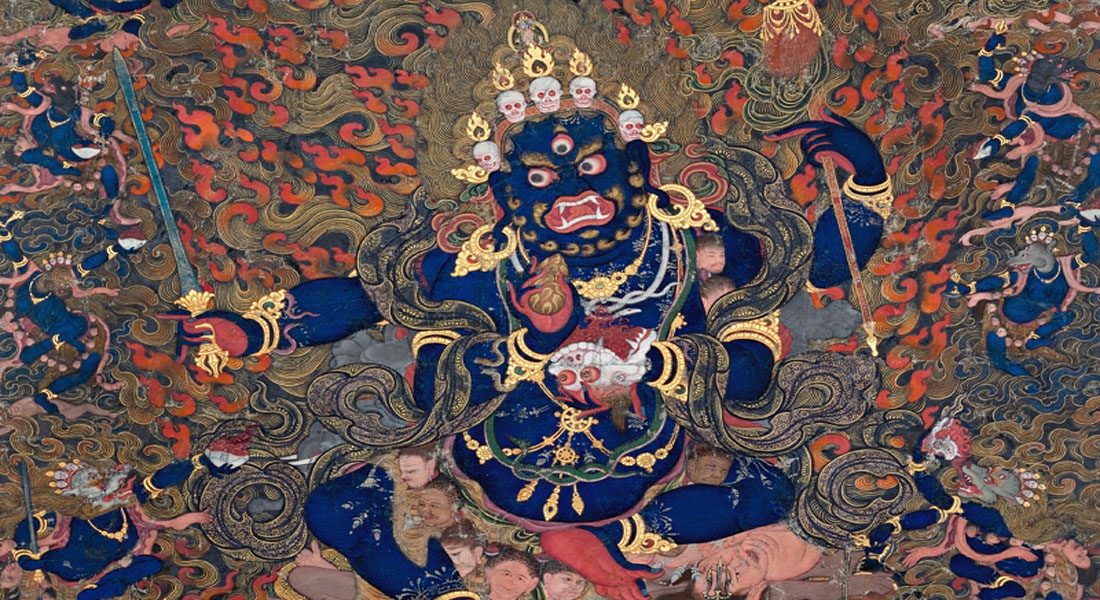Abstract I This article analyzes the theme of “kidnapping‟ in myth, folk lore and traditional storytelling among some adivasi communities in the Himalayas. Although it may refer to a remembrance of remote historical events, the theme of abduction in the narrative acts as a religious element closely connected symbolically with that of shamanic initiation. Furthermore, the legends about mysterious kidnappings in the tribes unfold a complex semiotic relationship with the creatures of fantastic imagination, while in an epistemological key they stand as a rebalancing element of the relationships between man and surrounding nature. The study proposes a comparative investigation between ādivāsī and janjāti groups of the central (Nepal) and eastern Himalayan (Arunachal Pradesh) ridge, supported by ethnographic field data.
Brief introduction to shamanism and fantastic creatures of Himalayan folklore
According to a purely statistical perspective, studies on South Asian shamanism seem to focus more on the Himalayan ridge than on peninsular India. The reason for this is probably to be found in the dominant presence of the shamanic element in local religiosity, or at least in its constant role in the general cultural landscape, in particular in Nepal, but also in the Tibetan area, as well as in the contiguous mountain territories of Northern India. The entire northeastern Indian region, or the states surrounding the alluvial plain of Brahmaputra, so rich in indigenous traditions and ethnic minorities, can be considered to as possessing a certain cultural continuity with the eastern Himalayan ridge. However, going down to the heart of the subcontinent, the incredible regional variety of religious expressions–belonging to Hinduism, Buddhism, Jainism, Sikhism, Islam, (but also Zoroastrianism and Christianity)–is so dense and protean that the shamanic/animistic element, typically based on tribal culture, would seem to have become diluted through the millennial history of India. In such a diversified and historically complex scenario, the variety of such phenomena as possession, exorcism, divination, healing, and other ritual activities which are openly ascribable or identifiable as shamanism must be related diachronically to the history of religions in the local context (Assayag, Tarabout, 1999). However, today the best representation of this complex comes from the religiosity of indigenous peoples (ādivāsī).
Journal Article
The Theme of abduction in the Himalayan Folk Tales: From Narrative Topos to Primary Symbol in the Semiotics of the ādivāsī Language
Author: Stefano Beggiora
Journal of Adivasi and Indigenous Studies
Vol. X, No. 2, August 2020: 44–63 / Published by: Joais.in
Read and download
About the author
Dr. Stefano Beggiora (stefano.beggiora@unive.it) is Associate Professor in History of India, Medieval Hindi Literature and Anthropology of India (Tribal Religions and Society) in the Department of Asian and North African Studies at the University Ca‟ Foscari Venice (Italy), where he received his Ph.D. in 2006. He conducted extensive fieldwork missions in South Asia and Mongolia and specializes in South-Asian shamanism. Dr. Beggiora has published several articles, chapters and books on Indian ādivāsī (Saoras, Kondhs, Apatanis, etc.), Colonial History, Constitutional framework and laws for safeguarding the Scheduled Tribes and Castes, Contemporary History of political movements of India.
Courtesy
Journal of Adivasi and Indigenous Studies (JAIS)
(A bi-annual peer-reviewed online journal posted on Academia.edu)
Vol. X, No. 2, August 2020: 44-63
© 2020 JAIS, ISSN (online) 2394-5524
–
Key words: Himalayan shamanism, theriantrophy, folk tales.

